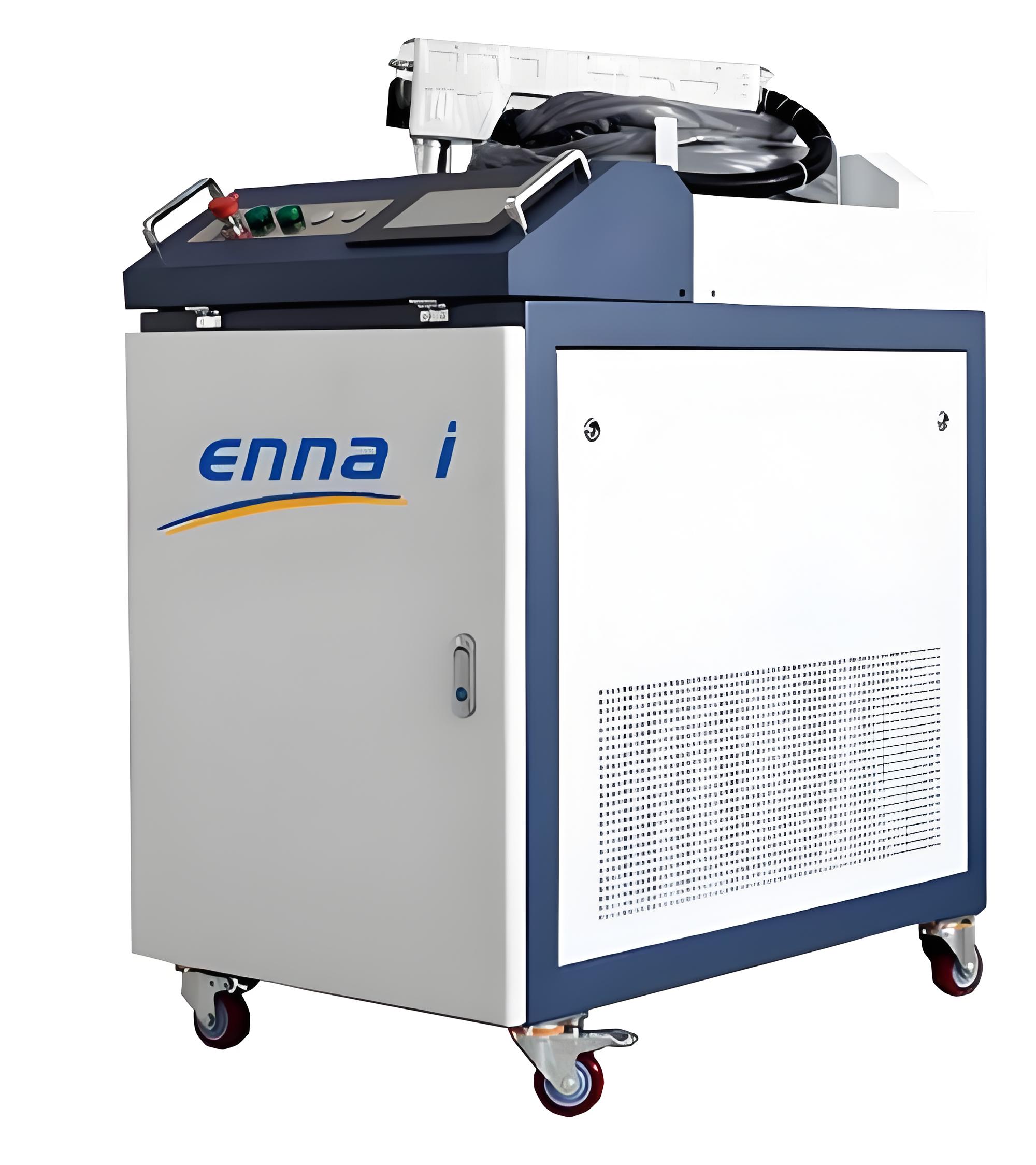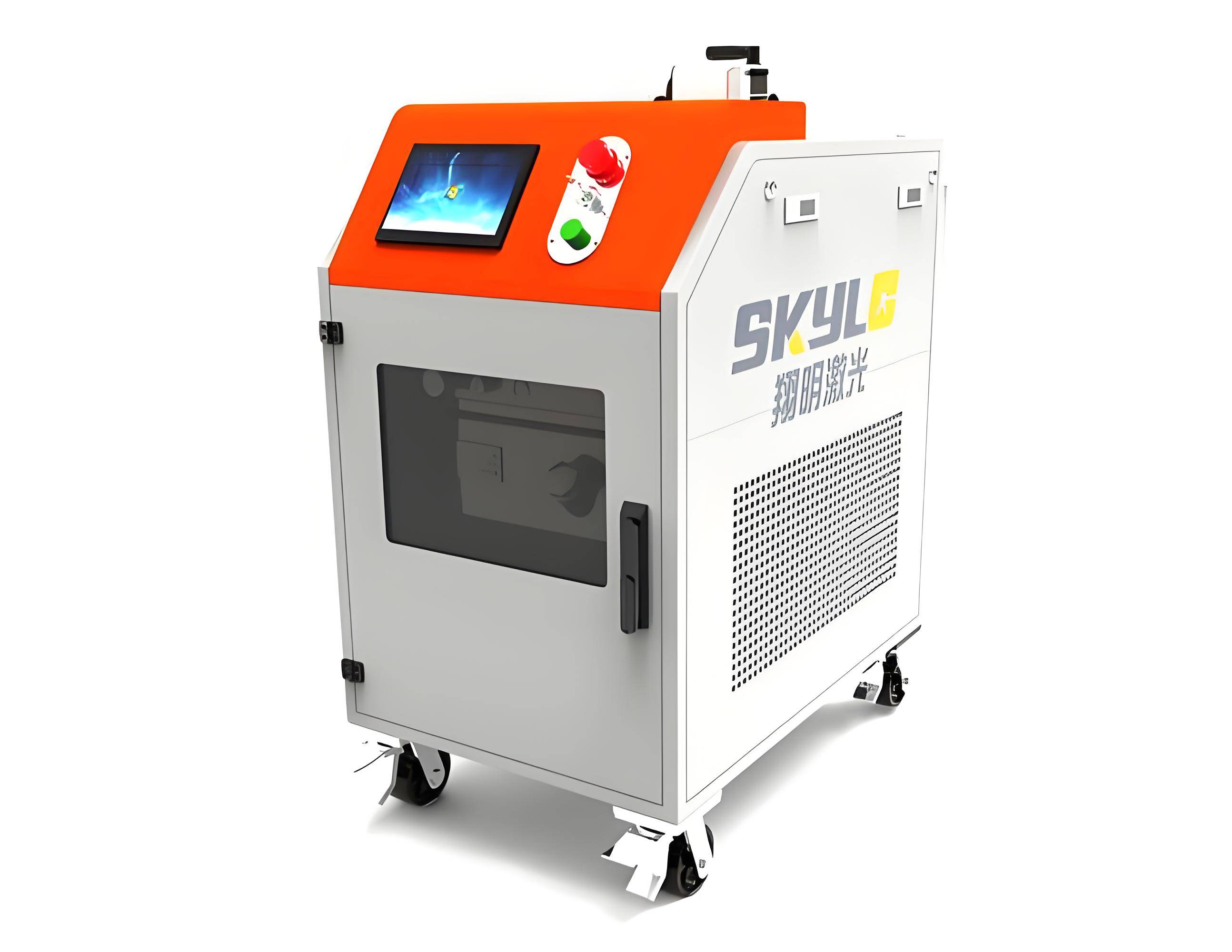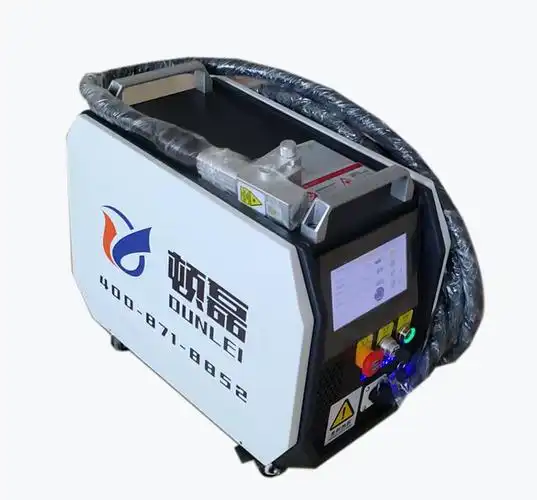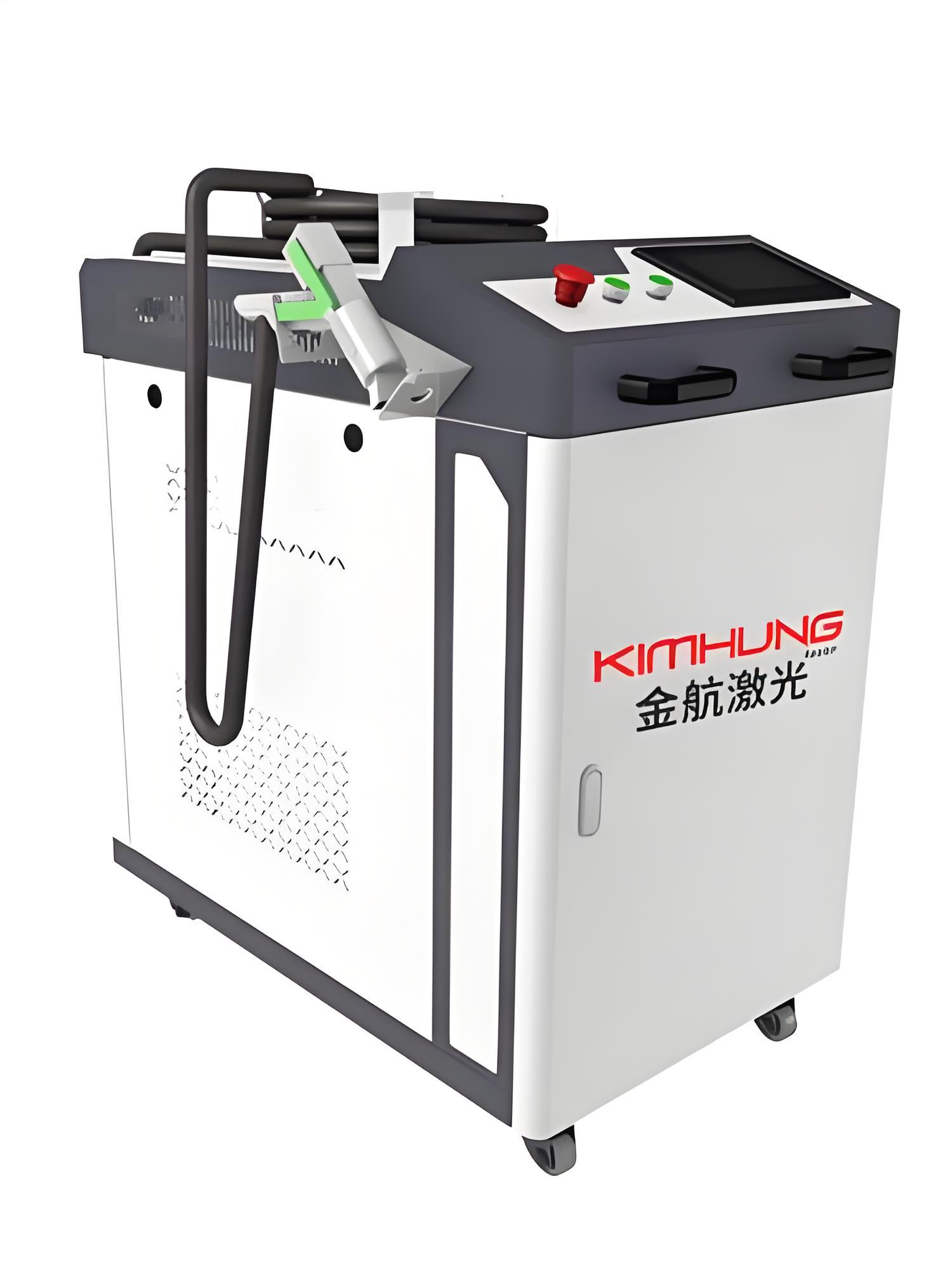As someone who’s spent years knee-deep in metal surface restoration, I’ve seen the havoc rust can wreak on everything from heavy machinery to delicate antiques. When it comes to removing rust, one question I hear time and again is whether laser rust removal machines—those sleek, high-tech tools making waves in the industry—might harm the metal underneath. It’s a valid concern. After all, nobody wants to trade one problem (rust) for another (scratched or weakened metal). Drawing from my hands-on experience and technical know-how, I’ll walk you through how laser rust removal works, whether it poses a risk to metal surfaces, and what you can do to ensure a safe, effective process. Spoiler: when used correctly, lasers are remarkably gentle, but there’s a lot to unpack to get it right.

Why the Concern About Metal Damage?
Rust removal isn’t just about aesthetics—it’s about preserving the integrity and functionality of metal components. Whether you’re refurbishing a factory pipeline, restoring a vintage car, or cleaning a priceless artifact, damaging the metal surface during rust removal can lead to costly repairs, reduced lifespan, or even total loss of value. Traditional methods like sandblasting or grinding often carry a high risk of scratching, pitting, or weakening the metal, so it’s natural to wonder if laser rust removal, with its futuristic vibe, might have similar pitfalls. Let’s dive into how lasers work and whether they live up to their promise of being non-destructive.
How Laser Rust Removal Works
To understand whether laser rust removal damages metal, we need to grasp its mechanics. A laser rust removal machine uses a focused, high-energy laser beam to target rust, oxide layers, or other contaminants on a metal surface. The laser’s energy is absorbed by the rust, causing it to heat up and either vaporize or flake off instantly. Because the laser is tuned to interact primarily with the rust (which absorbs light differently than clean metal), it leaves the underlying material largely untouched.
I first saw this in action during a project to clean rust from precision aerospace parts. The laser removed a thin layer of surface rust in seconds, leaving the aluminum alloy beneath gleaming and unscathed. It was a stark contrast to the grinding tools I’d used in the past, which often left visible scratches. But the key question remains: is this non-destructive nature guaranteed, or are there scenarios where the metal could be harmed?
Does Laser Rust Removal Damage Metal Surfaces?
The short answer is: when used correctly, laser rust removal causes minimal to no damage to metal surfaces. The technology is designed to be selective, targeting rust while sparing the base material. However, “correct use” is the operative phrase here. Let’s break down the factors that determine whether a laser rust removal machine might harm metal and how to avoid potential issues.
1. Laser Parameters: Power and Precision
The success of laser rust removal hinges on proper parameter settings, particularly laser power, pulse duration, and scanning speed. If the laser is set too high, it could overheat the metal, causing thermal damage like discoloration, warping, or micro-cracks. Conversely, if the power is too low, it may not remove rust effectively, requiring multiple passes that could inadvertently stress the surface.
In one project, I worked on cleaning rust from a stainless steel tank. We used a 300W pulsed laser with carefully calibrated settings, and the surface emerged spotless with no signs of damage. But I’ve also seen cases where an inexperienced operator cranked the power too high on a thin aluminum sheet, causing slight discoloration. The lesson? Always tailor the settings to the material and rust type. For most metals, low-to-medium power (100-500W) and high scanning speeds (2000-4000 mm/s) are safe starting points.

2. Material Sensitivity: Not All Metals Are Equal
Different metals react differently to laser energy. Ferrous metals (like steel and iron) are generally robust and tolerate laser cleaning well, as their high thermal conductivity dissipates heat quickly. Non-ferrous metals (like aluminum, copper, or titanium), however, are more sensitive due to lower melting points or higher reflectivity, which can lead to overheating if settings aren’t adjusted properly.
I recall a job cleaning rust from a copper alloy sculpture. The laser removed the green patina beautifully, but we had to use a low-power setting (200W) to avoid overheating the delicate surface. On the flip side, cleaning heavy rust from a carbon steel beam with a 1000W laser posed no issues, as the material could handle the heat. Knowing your metal’s properties is crucial to preventing damage.
3. Surface Conditions: Beyond Just Rust
Rust often coexists with other surface conditions, like coatings, oil, or grease, which can affect how the laser interacts with the metal. For instance, lasers can remove paint or oil alongside rust, but if the coating is highly reflective, it might reflect the laser beam, reducing efficiency or causing uneven cleaning. In rare cases, trapped contaminants under thick rust can cause localized overheating when vaporized.
I once worked on a rusted machine part covered in old lubricant. The laser handled both the rust and oil in one pass, but we had to adjust the focus to ensure the beam didn’t linger too long on any spot, which could’ve caused minor pitting. Pre-inspecting the surface and testing on a small area can prevent surprises.
4. Operator Skill: The Human Factor
Even the best equipment can’t compensate for operator error. An untrained user might misjudge settings, move the laser too slowly, or fail to account for material thickness, leading to surface damage. I’ve seen a novice operator scorch a thin steel plate by using a high-power setting meant for thicker materials. Proper training and experience are non-negotiable for safe laser rust removal.

Comparing Laser Rust Removal to Traditional Methods
To put laser rust removal’s impact on metal surfaces in perspective, let’s compare it to traditional methods like sandblasting, chemical cleaning, and mechanical grinding. Each has its own risks of damaging metal, and understanding these can highlight why lasers are often the safer choice.
| Method | Risk of Metal Damage | Common Issues | Mitigation Strategies |
|---|---|---|---|
| Laser Rust Removal | Low (minimal when calibrated) | Thermal damage if power too high | Adjust power/speed, test first |
| Sandblasting | High | Surface abrasion, material loss | Use fine abrasives, mask sensitive areas |
| Chemical Cleaning | Moderate | Etching, discoloration | Neutralize chemicals, rinse thoroughly |
| Mechanical Grinding | High | Scratches, gouges, overheating | Use skilled operators, light pressure |
Laser Rust Removal: The non-contact nature means no physical abrasion, and precise energy control minimizes thermal impact. In a project cleaning a rusted steel bridge, the laser left the surface pristine, while sandblasting on a similar project caused visible pitting.
Sandblasting: The abrasive particles can erode the metal, especially on soft or thin materials like aluminum. I’ve seen sandblasting strip away protective coatings, requiring costly refinishing.
Chemical Cleaning: Acids or alkalis can etch or discolor metal if not properly neutralized. I once had to deal with a steel plate that turned patchy after improper chemical rinsing.
Mechanical Grinding: Wire brushes or grinders often leave scratches or remove excess material. During a job on a rusted machine base, grinding left deep marks that needed polishing to fix.
Verdict: Laser rust removal is the least likely to damage metal surfaces when used correctly, thanks to its non-abrasive, highly controllable process.

Real-World Examples: Laser Rust Removal in Action
To illustrate how laser rust removal protects metal surfaces, here are two projects I’ve worked on:
Aerospace Component Restoration
A client needed rust removed from aluminum alloy aircraft parts without compromising their precision tolerances. Using a 200W pulsed laser, we carefully calibrated the settings to remove surface rust without heating the thin metal. The result was a flawless surface, ready for reassembly, with no measurable material loss. Grinding would’ve been far too risky for such delicate parts.
Antique Iron Restoration
A museum tasked me with cleaning rust from a 200-year-old iron gate with intricate designs. The laser (300W) removed the rust without touching the detailed engravings, preserving the gate’s historical value. Chemical cleaning was ruled out due to the risk of etching, and grinding would’ve destroyed the fine details.
These cases show how lasers can safeguard metal surfaces where traditional methods often fall short.
How to Ensure Laser Rust Removal Doesn’t Damage Metal
Based on my experience, here are practical steps to minimize the risk of damage when using a laser rust removal machine:
Test on a Small Area First: Always perform a test run on an inconspicuous part of the metal to fine-tune power, pulse duration, and scanning speed. I’ve avoided countless issues by starting with a test patch.
Match Settings to Material: Use lower power for sensitive metals like aluminum or copper (100-300W) and higher power for robust materials like steel (500-1000W). Consult material-specific guidelines or the machine’s manual.
Monitor Surface Conditions: Check for coatings, oil, or thick rust that might affect laser performance. Pre-cleaning with a dry cloth can help in some cases.
Train Operators Thoroughly: Ensure anyone using the machine understands how to adjust settings and recognize signs of overheating, like discoloration or warping.
Use Proper Safety Gear: While not directly related to metal damage, wearing protective goggles and ensuring good ventilation prevents operator errors that could lead to improper handling.
In one project, I helped a factory set up a laser rust removal protocol for steel pipes. By establishing a standard testing process and training the team, we achieved consistent, damage-free results across hundreds of parts.

Limitations: When Lasers Might Pose a Risk
While laser rust removal is generally safe for metal surfaces, there are scenarios where caution is needed:
Thin or Heat-Sensitive Metals: Very thin sheets (e.g., <0.5mm) or metals with low melting points (e.g., lead) can overheat if the laser is too powerful. I’ve seen thin aluminum panels warp slightly due to excessive laser energy.
Reflective Surfaces: Highly polished metals like mirror-finish stainless steel can reflect the laser, reducing efficiency and potentially causing uneven heating. Adjusting the beam angle or using a defocused laser can help.
Complex Geometries: Lasers may struggle to reach deep recesses or tight corners, leading to uneven cleaning. In such cases, I’ve combined lasers with manual cleaning for best results.
Operator Error: Incorrect settings or slow scanning can cause thermal buildup. I once saw an operator burn a small patch on a steel plate by lingering too long in one spot.
The Future of Laser Rust Removal
As laser technology evolves, the risk of metal damage is becoming even lower. Newer machines with AI-assisted controls can automatically adjust parameters based on surface conditions, reducing human error. I’ve tested prototypes that detect material type and rust thickness in real-time, ensuring optimal settings. Additionally, ultrafast lasers (like femtosecond lasers) deliver energy in such short bursts that heat buildup is negligible, making them ideal for ultra-sensitive applications like aerospace or heritage conservation.
Conclusion: A Safe, Precise Solution When Done Right
After years of using laser rust removal machines across countless projects, I can confidently say that they are highly unlikely to damage metal surfaces when operated with care. Their non-contact, precise nature makes them far safer than abrasive methods like sandblasting or grinding, which often leave scratches or material loss. By choosing the right settings, understanding your metal’s properties, and training operators properly, you can achieve rust-free, pristine surfaces without compromising the material.
If you’re considering laser rust removal for your next project, rest assured it’s a powerful, safe option for most metals. Have questions about specific materials or applications? I’m happy to share more insights from my experience—just let me know!

Related Q&A
1. Can laser rust removal damage thin metals like aluminum sheets?
Thin metals are more sensitive to heat, but with low-power settings (100-300W) and fast scanning, lasers can clean them safely. Always test on a small area first.
2. How do I know if my laser settings are safe for the metal?
Start with the manufacturer’s recommended settings for your material and rust type, then perform a test run. Look for signs of discoloration or warping, and adjust as needed.
3. Is laser rust removal safe for polished or reflective surfaces?
Reflective surfaces can reflect the laser, reducing efficiency. Use lower power or a defocused beam, and test carefully to avoid uneven heating.
4. Can lasers damage coatings or paint on metal?
Lasers can remove coatings along with rust, but with precise settings, you can target only the rust. For selective cleaning, consult a professional to adjust parameters.
5. What’s the best way to learn laser rust removal safely?
Take a training course from the equipment supplier and practice on scrap metal. Hands-on experience with proper guidance is the key to mastering safe operation.






